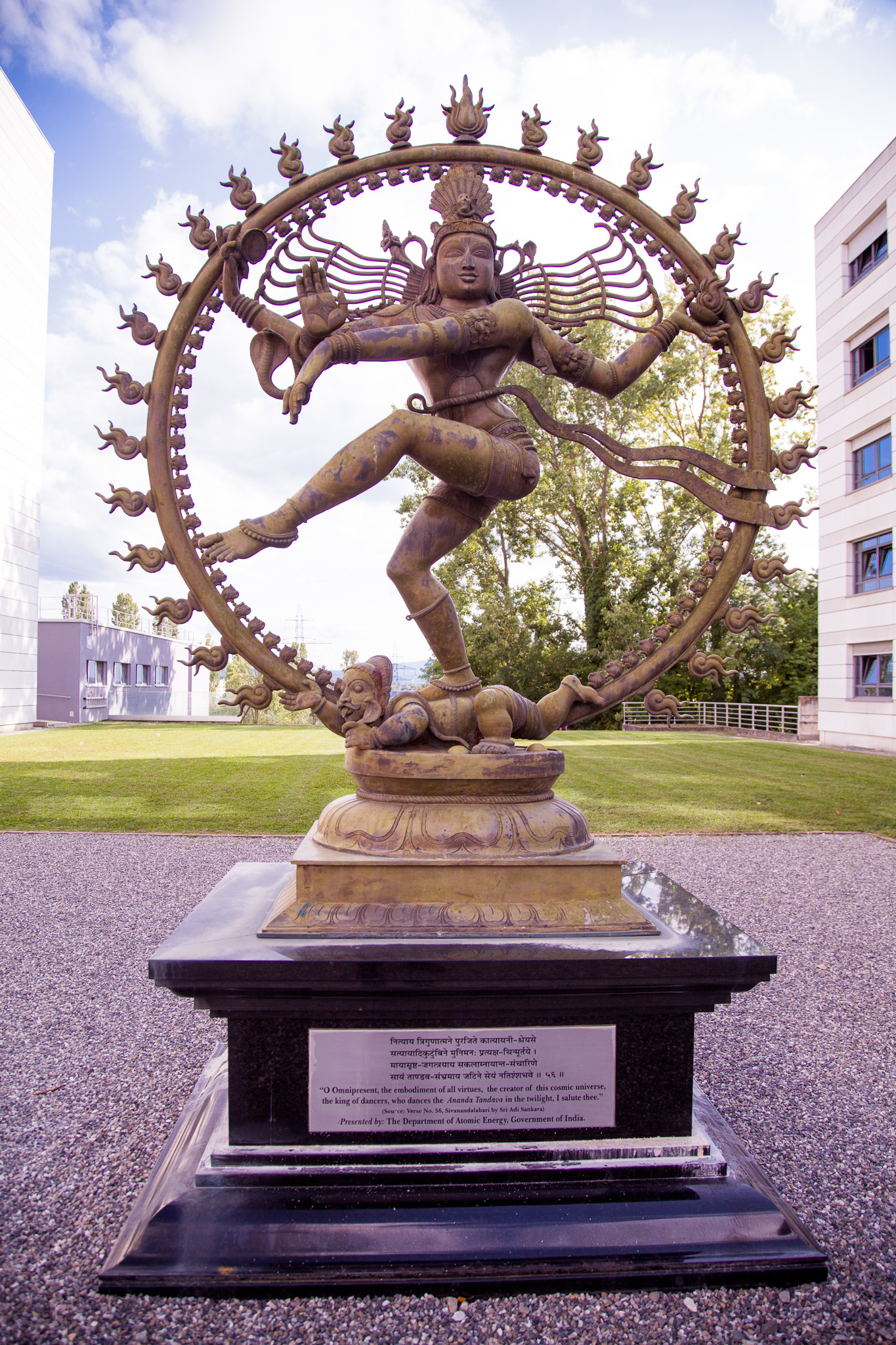One of the world’s premier institutes, the European Organization for Nuclear Research, known as CERN, has the world’s largest and most complex scientific instruments to study the basic constituents of matter – fundamental particles. It houses the Large Hadron Collider (LHC) which is the world’s largest and most powerful particle accelerator.
Interestingly, this premier institute has a 2-metre-tall statue of Natraja installed on the premises.
While netizens have been trying to guess how that statue reached Europe, several stories have emerged on social media about it.
Some say that the Natraja statute explains the structure of the atom and therefore scientists decided to place it on the CERN campus. Another one goes as saying the posture of the statue called ‘Anand Tandavam’ as the motion is similar to the motion of sub atoms.
If everything in Puranas is a Myth …..
Then why world's largest particle physics lab CERN has Shiva's 'Nataraj' statue ? pic.twitter.com/wzpSZUKrOP
— Lost Temples™ (@LostTemple7) February 21, 2020
represents emptiness r nothingness. So,t universe comes from nothingness d goes back into it..since this agrees well with modern cosmological theories of t fate of t universe ( a.k.a t big bounce theory),CERN saw it fit that t dancing nataraja is a good symbolism for the theory
— Lost Temples™ (@LostTemple7) February 21, 2020
Statue of "Nataraja" — fierce form of Shiva at CERN Geneva — Indian government acknowledged the profound significance of the metaphor of Shiva’s dance for the cosmic dance of subatomic particles, which is observed and analyzed by CERN’s physicists.1/2 pic.twitter.com/8de1kRTJHB
— @XKB (@kaushikburman) February 21, 2020
Statue of Natraja in CERN complex in Geneva. Nataraja is casting a shadow on d HQ building.Is there a message in it? pic.twitter.com/8LD6wAeTFZ
— V Gopalan (@TheGopalan) May 14, 2016
While all the of these reasons are fake news, the CERN website acknowledges the presence of the statue and explains how it got there.
The statue was gifted by the Government of India to celebrate its association with CERN, which started in the 1960s and remains strong today. India enjoys the position of Associate Member State.
“India is one of CERN’s associate member states. CERN is a multicultural organization that welcomes scientists from more than 100 countries and 680 institutions. The Shiva statue is only one of the many statues and art pieces at CERN,” says the CERN’s website.

In the Hindu religion, Lord Shiva practices the Nataraj dance, which symbolizes Shakti, or life force. The Indian government chose this deity because of a metaphor between the cosmic dance of the Nataraj and the modern study of the ‘cosmic dance’ of subatomic particles.
It was installed on June 18, 2004, and the plaque beside the statue further explains its significance by quoting Fritjof Capra, a physicist, systems theorist, and the author of several books, including ‘The Tao of Physics’.
“Hundreds of years ago, Indian artists created visual images of dancing Shivas in a beautiful series of bronzes. In our time, physicists have used the most advanced technology to portray the patterns of the cosmic dance. The metaphor of the cosmic dance thus unifies ancient mythology, religious art, and modern physics,” the plaque reads.
Interestingly, while the statue is a religious and spiritual symbol, it was created by an atheist artist from Tamil Nadu. According to a BBC report, popularly known as ‘Sirpi’ (craftsman), Rajan is one of the active supporters of Periyar’s principles in Tamil social media circles.
He actively criticizes superstition, the caste system, religious belief, and astrology in Tamil Nadu. He told BBC that the Indian Ministry of External Affairs ordered him through the Central Cottage Industries Emporium in 1998 to build the statue. Rajan said he had a close association with the Central Cottage Industries Emporium for professional reasons.
“From the 1980s onwards I used to go to Delhi and Northern states and was in touch with the Central Cottage Industries Emporium for professional reasons. They ordered me to make this statue. There is no conflict between my theory and my profession,” he said. The report added that Rajan has employed Dalit artisans who work at the sculptures.
In conclusion, the state represents a metaphor between mythology and science and was offered by the Government of India as a gift to CERN.




